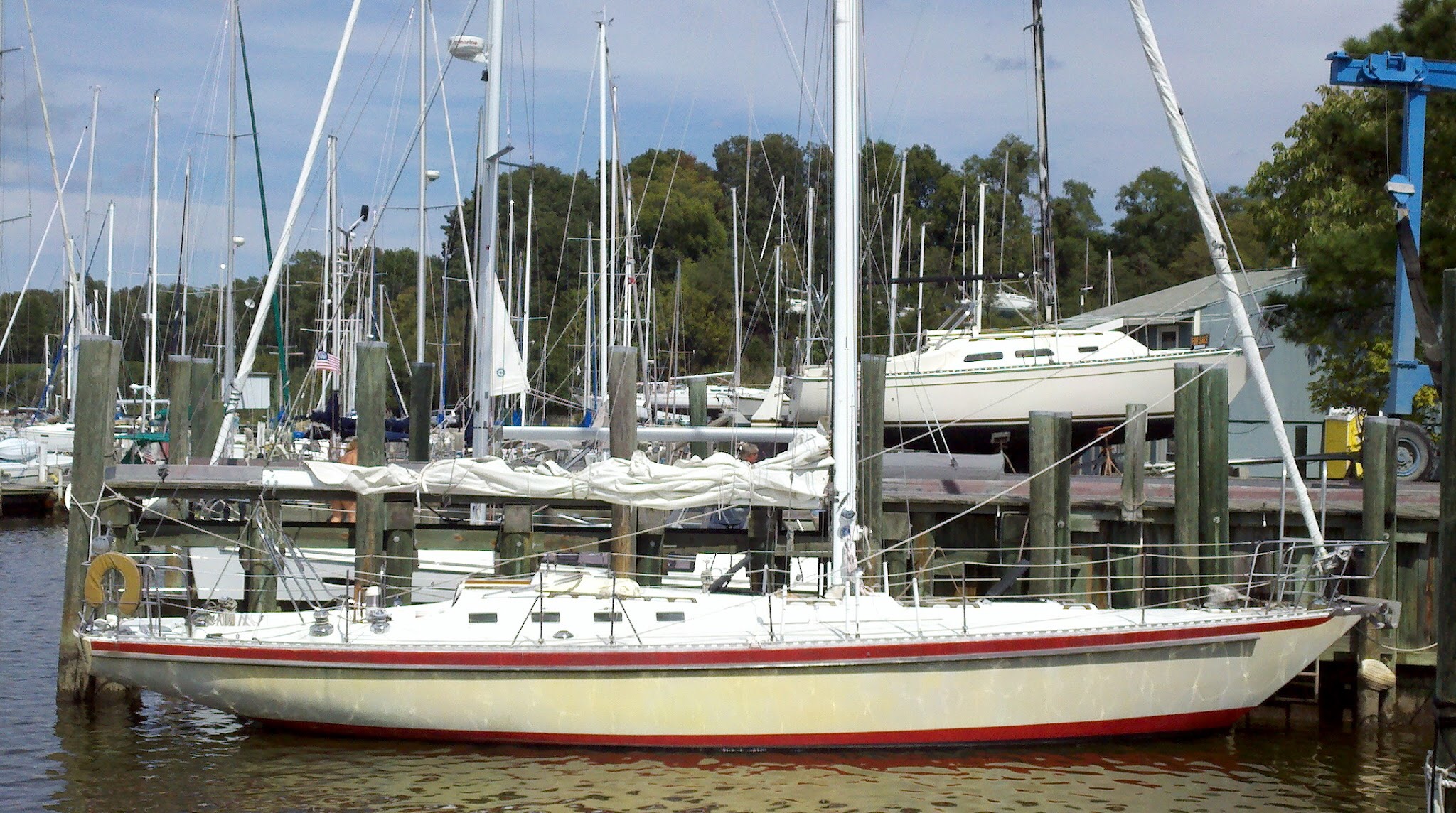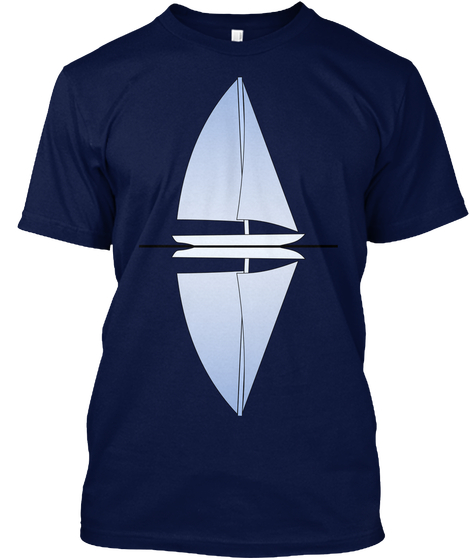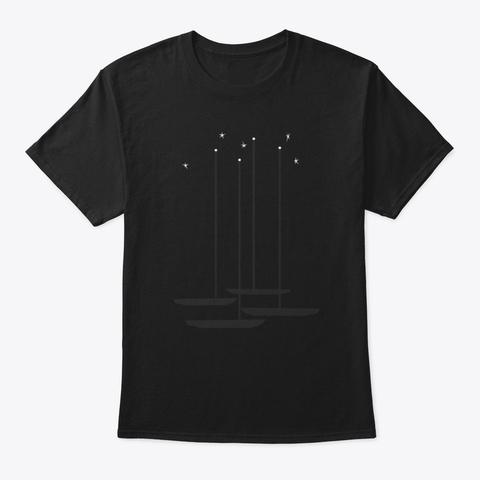Long overhangs are a common design characteristic of CCA (Cruising Club of America) boats that were very popular back in the 1950s and 60s. These yachts sported short water lines for their length overall and had significantly long overhangs. Wisdom, as pictured when I bought her in 2012 is 45 feet long with a 32 foot waterline. Simple arrhythmic will tell you that we have 13 feet of overhang, most of which is located in the stern.
The idea behind this design is simple, at rest, the yacht has some lovely overhangs that look timeless and classic, but also help cheat the racing rules at the time. The rules measured the boats waterline for its handicap rating, since waterline length directly correlates to maximum speed through the water. A 45 foot yacht has a hull speed of 8.98 knots while a 32 foot yacht has a hull speed of only 7.58 knots.
So, the large yacht with long overhangs gets rated as a smaller yacht with a lower top speed. Then when the wind comes, it heels over and that long overhang goes into the water, giving the speed boost because of the longer waterline.
The stern overhang is the most effective area for this cheating to take place, as it can quickly fall into the water with very little heeling.
We sailed most of the time heeled over to 10 degrees, and the fouling scum on our topside paint is evidence of what parts of the overhang spent the most time underwater. The blue line demarcates the resting (vertical) waterline while the green line demarcates the heeled waterline. The yellow area between the lines is the added wetted surface.
After spending close to a month sailing from Bermuda to the Azores, the fouling growth is very evident on our topside paint. It is plain to see that the bow overhang doesn’t contribute to the added waterline length while the stern adds a considerable amount of length.
Next time you see a yacht with a long stern overhang, imagine how the waterline changes as they sail and that long stern overhang splashes into the sea!























